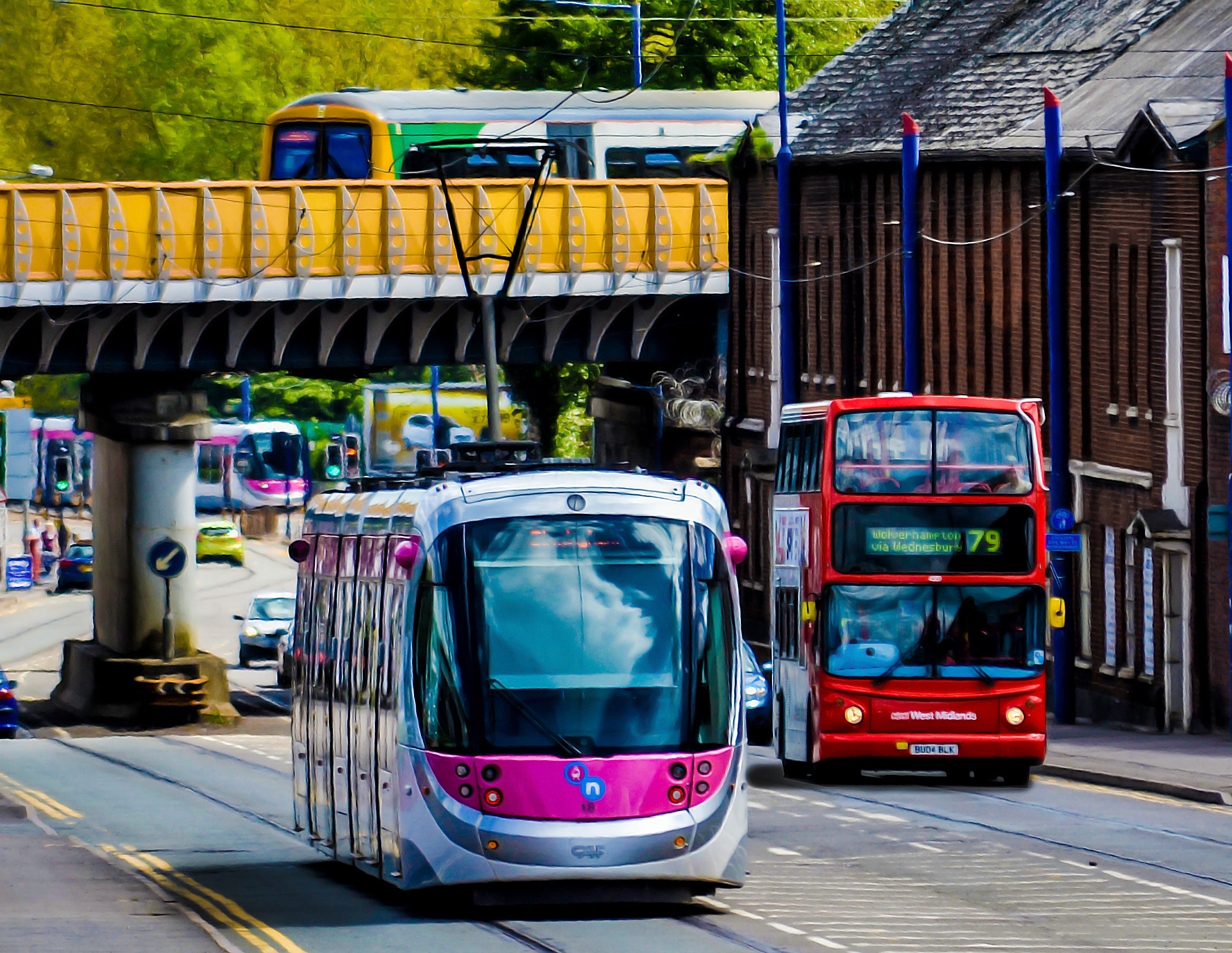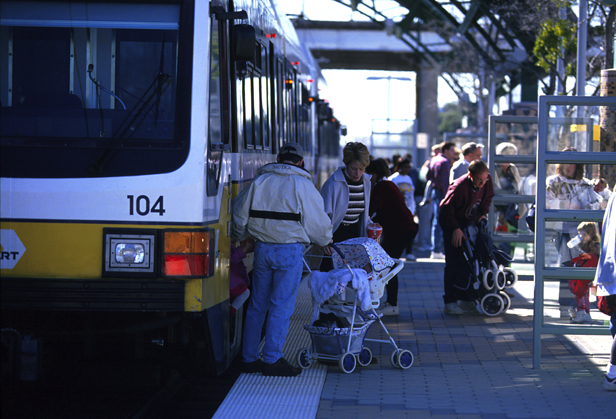
It is increasingly clear that local authorities’ reluctance to implement Mobility as a Service (
Traditionally, this conundrum has been overcome by specifying service levels, setting maximum fares and requiring wheelchair accessibility or other help for those with disabilities. Taxis and private hire were also tightly regulated with maximum fares, driver vetting and so forth.
While authorities can see the benefits of MaaS, they first need to convince the travelling public that convenient end-to-end mobility is possible without using their car - and a pay-as-you-go model is the most popular option. However, there remains a reluctance to passing many of the regulatory and social equity functions to a third party, especially a commercial organisation.
So, despite the fact that MaaS platforms such as Fluidtime and MaaS Global work closely with local authorities to fulfil those needs, many authorities believe their ability to deliver policy will be compromised.
This has led some authorities to building their own MaaS-style platforms. Unfortunately, the ongoing cost and complication of updating the apps and software every time a new smartphone is launched or there are changes to the services, have proved too high for some of the trailblazing authorities. An additional financial consideration is the way MaaS platforms collect and distribute the appropriate portion of the revenue from a multimodal journey to each service provider and how the platform operator makes its money. Losing a proportion of the ticket revenue is not an attractive proposition for many transport providers.
New solutions
Today, start-up companies, additional services and new providers in the mobility sector mean there are now various routes to overcoming these barriers and enabling local authorities to offer MaaS-style solutions while retaining full control. By utilising the latest in technology, can a local authority piece together the services needed for end-to-end mobility without needing to create and maintain their own app?
“Yes” was the resounding answer from all those we questioned.
Combining a trip-planning function with a mobile ticketing service would go a long way towards creating a MaaS platform – and this is already happening.
Authorities in Copenhagen are combining their in-house trip planner (Rejseplanen) with ticketing concept Rejsekort to create an end-to-end journey planner and payment system. Dallas Area Rapid Transit (Dart) is developing a trip-planning app and plans to incorporate it with its existing GoPass tap transit card which includes a cash-to-mobile option for those without a bank account. Not only does Dart want it to cover the scheduled bus and light rail services but also on-demand microtransit, taxi-hailing services from Bird, ride-sharing, kick scooters and bike-share.
On a wider scale, New Zealand’s transport authority has piloted RideMate, a MaaS-style app, and is now building a nationwide Mobility Marketplace.
Technical integration
Sandra Witzel from SkedGo, the company behind the TripGo trip-planning app - active in more than 300 cities around the world - says her company, and others, can integrate a ticketing function: “We can provide trip planning for any city which makes the information available to us. But we are not ticketing experts, that’s not what we do, so we partner with those who are and who have the processes in place to make payments to the various transport providers.”
One example is Finnish company PayiQ (which also provides the ticketing function to MaaS Global).
Services run by private transport operators including taxi-hailing, car-share and micromobility solutions can be integrated into both the trip planning and payment functions. This is starting to happen in cities like Chicago where the authorities want to integrate bike-share services into the forthcoming app version of Ventra travel card (based on Cubic’s technology) which will include mapping of bike stations.
Cubic’s strategy director Andy Taylor says the company is working with authorities in the US and Australia to incorporate ride-hailing services into the ticketing realm, based on the company’s Traveller app. The app includes a trip-planning function, live updates to passengers and ‘push messages’ from the authority in the case of delays or disruptions.
By combining various services, Taylor says an authority can provide integrated transport while remaining “in the driving seat” in terms of achieving goals such as social equity and environmental benefits. One of the parties will take care of the business and payments arrangements with the transport providers, and Cubic-backed examples will be seen later this year in the US - in Chicago, New York and Los Angeles – as well as Brisbane, Australia. “We carry the burden of upgrading the technology and push that out across all the applications, so the city benefits by offering integrated transport solutions,” says Taylor.
He is finding that interest in MaaS outside the big cities is very high and Cubic is investigating ways to enable transport providers and even other ticketing solutions to interact with its back-office system to create seamless mobility. “In the MaaS ecosystem, we see ourselves as a clearing house for transactions to do with mobility that anybody can plug into. We have the ability to interface across a number of transport operators and that will be key to making MaaS a success.”
Masabi’s app-based JustRide mobile ticketing and payments platform is designed for the public sector now, but other providers are being integrated into the system. In Denver, for instance, the authority wants to integrate taxi-hailing services to offer end-to-end transport.
As such, integrations are possible using many permutations of technology providers, and authorities can decide which solutions best fit their situation. Technical aspects aside, authorities have to consider the services offered and ensure the provider will release their application programming interfaces (APIs), meet various quality, licensing and service provision requirements and are willing to share data to improve services.
The fit between public authorities and private enterprise has been highlighted by the meteoric rise and spread of Uber’s taxi-hailing services, which fell foul of some authorities’ requirements - and even when partnering with authorities, it was reluctant to share data. Now, however, new taxi-hailing apps including Gett, Bolt (previously Taxify), MyTaxi, EzTaxi, Ola and Xooox (pronounced ‘Zooks’) are becoming available.
Many of the newcomers are not looking to be transport providers in the Uber model but a contracted technology provider to existing licensed taxi and private hire companies wanting to offer a ride-hailing app. This is exemplified by Bolt’s director of regulation and public policy, Dominick Moxon-Tritsch, who describes the company as happy to share data with the relevant authorities.
Xooox’s founder, former taxi driver Darren Tenney, says his system is different because it puts the driver in charge: they see all ride requests and can choose which jobs they take and how much they charge. Registered users requesting a ride via the app can view all available vehicles in the area (from one or more companies), see how far away each one is and how much they would charge to take them to their destination. Payment is directly from the passenger’s account to the taxi driver’s and both drivers and passengers can use the app to send an emergency alert or report other incidents.
Smoothing the way for MaaS
Across Europe, various MaaS trials will soon get under way and a working group within MaaS Alliance is mapping European legislation that can impact (either enabling or hindering) the deployment of MaaS within European Union member states. The group is chaired by Päivi Wood, previously with DG Move and now the director of EU and international affairs with the Transport and Communications Agency in Finland.
“If we really want to enable MaaS and other new mobility services then we need to point out where the barriers are,” she says.
The work started with transport legislation but it was soon evident that MaaS impinges on more legislative areas than transport alone - data being a major consideration.
“With the possible exception of the passenger rights and package travel legislation for international travel, we have not seen so far - at the European level - legislation that would hinder the introduction of MaaS and other new mobility services,” Wood adds.
With the introduction of its Transport Code, Finland swept away a century’s worth of legislation. “Finland now has legislation that truly supports new mobility services and we can share our experiences with other countries. Such information would be very useful for other countries looking to revise their own legislation.”
Helsinki will host the EU’s second Digital Transport Days Conference (7-9 October) where MaaS will be one of the main themes. It will examine the key to making data available in a reusable format, what passengers can expect from the new mobility services and what can be done with 5G, artificial intelligence, blockchain, Big Data and the Internet of Things to foster innovative solutions for every transport mode.
“We provide the authority with a level of oversight they’ve never had before, enabling them to see how many taxis and private hire vehicles are operating in each area throughout the day,” Tenney says. “When needed, vehicle or driver details can be added, changed or deleted in three minutes.”
He suggests that 84 UK authorities are using - or have registered an interest in - the technology, with many from predominantly rural areas. This integration of trip planning and mobile ticketing may suit local authorities and transport providers – but where do they start? Witzel’s advice is: “Get everybody in one room and tell them what you want to do. They can then discuss technicalities and business details directly with each other.”
Authorities are likely to have a choice of which provider’s app the service will be based on (ticketing or trip planning) and many offer white-label versions. It is then the provider’s responsibility to make the necessary updates for new phones, security and the like – which would be part and practice of the normal operation for such companies.
Responsibility for other updates (timetable changes, incorporating additional transport providers, and so on) would be subject to negotiation.
With these new options, authorities really can embrace MaaS without relinquishing control.
UITP on MaaS
The latest report by the International Association of Public Transport (UITP) recognises the technical advances and highlights three ways of offering a MaaS platform: a commercial MaaS provider, a public transport operator acting as an integrator and an open back-end model set up by a local authority into which various transport providers are integrated. It defines the latter as public infrastructure with rules determined by the public authority (including the need for open APIs) and on which different actors could build a MaaS solution.
It says such solutions would be perceived as offering a customer-oriented, innovative and impartial service which makes local mobility providers more likely to integrate their services. The report also outlines what an integrator can reasonably expect in the way of services and cooperation from actors in various transport modes.
In April 2020, Helsinki will also host the Transport Research Arena where new mobility services will again be a major theme, from the viewpoint of how we can move from development to deployment.












